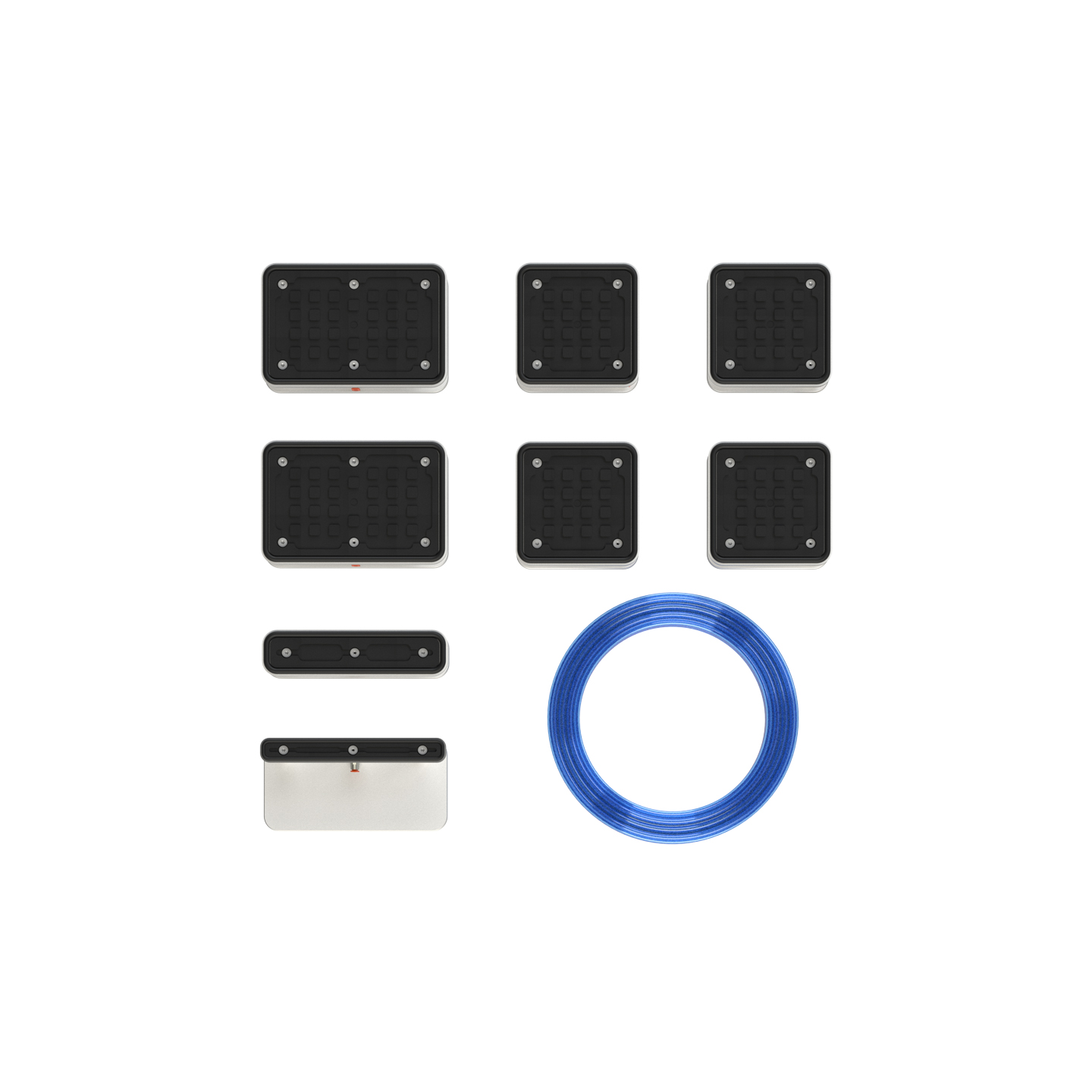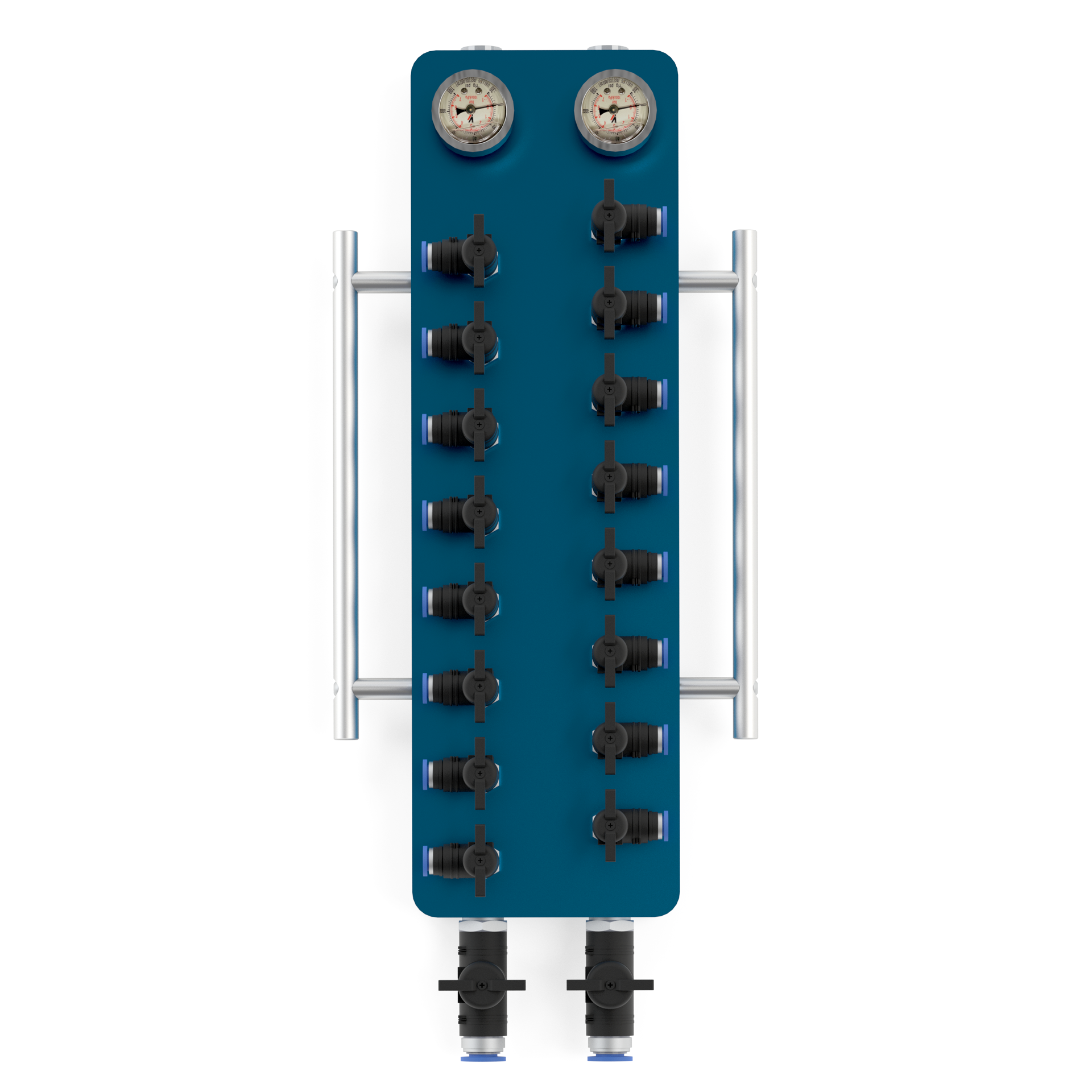Vacuum leaks are your enemy.
Finding them is the real challenge.
- The Isolator allows the operator to check for vacuum leaks by easily isolating possible failure points, eliminating the problem.
- Various factors such as a worn seal, a worn O-Ring, damage to the part, defects in the table surface, etc., may cause a leak.
- With the Isolator, you can quickly locate, “isolate,” and eliminate pesky vacuum leaks, increasing your machine’s overall vacuum and effective holding power for better and faster processing.
| Part Number | 53-30HG1 |
| Isolator Kit Includes | Vacuum Gauge, Control Valve, Four separate pairs of tube fittings (6 mm, 8 mm, 10 mm, 12 mm, 14 mm, and 1/2″) |

Testing Guide:
- Interrupt the Vacuum Line to Test Part with the Control Valve towards the Vacuum Source
(For Manifolds, ensure that all other Valves to the Manifold are closed) - Connect the appropriate tubing
- Run Vacuum to the Test Part with the Control Valve open
- Once the Gauge shows vacuum, close the Control Valve
- If the dial indicator drops, there is a leak
Troubleshooting:
Manifolds –
- Run regulated air (10-15 PSI) with all valves closed with one inlet open.
- If the machine has a float function, the air is already regulated.
- To identify a leak(similar to checking a propane tank):
- Listen for a hissing noise coming from the source of the leak.
- Apply soapy water to the outside of the manifold along the valves, and watch for bubbles.
- Replace valves as needed
Suction Cups –
- Check air fittings
- Fittings should click when pressed
- Check top and bottom seals
- Seals should sit proud of the channel
- Replace fittings and seals as needed
Downloads
Isolator Kit
$79.00


























